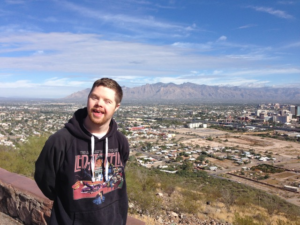Mom of Adult with Down’s Syndrome: It’s Harder to a Get a Job at Businesses That Struggle Financially
By Felicia Bechtoldt
Via Oregon Workforce and Economic Information
On July 26, the United States celebrates the anniversary of the Americans with Disabilities Act, which prohibits discrimination against people with disabilities in employment, education, transportation, state and local government services, public accommodations, telecommunications, and commercial facilities.
We interviewed Erik from Corvallis, Oregon who shared with us the challenges of finding a job. He has Down’s syndrome and feels fortunate to work at Oregon State University’s McNary Dining Hall for the last four years. He is a dishwasher and absolutely loves his job. It took him nine to 10 months to become employed. Prior to being employed at McNary Dining, he sent dozens of resumes without a response.
Erik’s mother, Jennifer, is a former special education teacher who worked with students with disabilities in the Young Adult Skills program. She said that the best way to help people with disabilities find a job is to approach successful well-established businesses that are willing to give back to their community. “It is harder to get a job at businesses that are struggling financially.”
When looking for jobs, she highlighted that it’s important to look at what the person likes to do, what skills they are good at, and what jobs can fit them. Erik likes water sprinklers and he developed the skills needed for dishwashing with his previous volunteer and work experience. Jennifer said that people with disabilities are consistent workers once they know the job and employers don’t have to worry about them coming late to work. When we asked about barriers to employment of people with disabilities, Jennifer said that lack of interpersonal, behavioral, and hygiene skills are a barrier to many people with disabilities.
Disclaimer: Articles featured on Oregon Report are the creation, responsibility and opinion of the authoring individual or organization which is featured at the top of every article.



